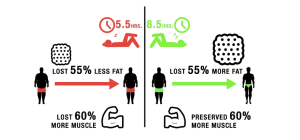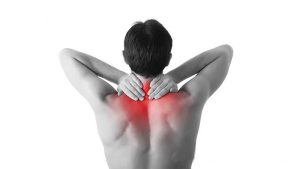All arm movements are dependent on a good, normal rhythmic movement between the shoulder blades, spine, clavicle, and shoulder. If shoulder mechanics do not work, this can result in neck, arms, back, and shoulder pain.
Shoulder anatomy
Your shoulder consists of three bones: your upper arm bone (humerus), your shoulder blade (scapula), along with your collarbone (clavicle). Your arm is held in your shoulder socket by the rotator cuff. These muscles and tendons create a covering across the head of the upper arm and attach to the shoulder blade. There is a lubricating sac known as the bursa, which lies between the rotator cuff and the bone on the very top of the shoulder (acromion). The bursa enables the rotator cuff tendons to glide freely on moving your arm.
The shoulder joint is the most mobile joint in the body. It moves the shoulder forward and backward. It also allows the arm to move in a circular motion, and to move up and away from the body.
Shoulder pain symptoms
You may experience shoulder pain and stiffness if you raise your arm or lower it from a heightened position. Early symptoms may include:
- Minor pain which is present both with activity and also at rest
- Pain radiating from the front of the shoulder to the side of the arm
- Sudden pain with lifting and reaching movements
- Swelling and tenderness
- Athletes in overhead sports often have pain when throwing or serving a tennis ball
As the problem progresses, the symptoms increase and may result in:
- Pain at night
- Loss of strength and motion
- Difficulty doing activities that position the arm behind your back, for instance, buttoning or zippering
Shoulder pain causes
The position and support muscle of the shoulder blades play a particularly important role in all arm movements. Unilateral posture allows the arms to be held slightly out from the side of the body, with round, forward curved shoulders. In this position, lose scapula its muscular support, the small, stabilising shoulder muscles are overloaded and it can get cramped for the tendons that go under the clavicle until the ball joint in the shoulder. Over time this can lead to inflammation and degenerative changes in tendons and joints. Shoulder pain can also come from wear and calcification, narrow channels of nerve, muscles, and blood vessels, as well as shoulder capsule, may harden, also called frozen shoulder.
Rotator cuff pain frequently occurs in both young athletes and middle-aged people. Young athletes using their arms overhead for swimming, baseball, and tennis are particularly vulnerable. Individuals who do repetitive lifting or overhead activities while using the arm, including paper hanging, construction, or painting are susceptible to injury as well. All these issues must be thoroughly examined by a chiropractor for the proper treatment can be implemented.
To delve into the most common complaints related to the shoulder, check the menu below:
Shoulder pain treatment
Shoulder pain is very common and can have several different causes that our chiropractors can examine, diagnose, and treat. The objective of chiropractic treatment is to relieve pain and restore function. In planning your treatment, your chiropractor will consider your age, level of activity, and overall health. He will mainly use his hands in the treatment and a variety of methods and techniques to restore normal function in the joints, muscles, connective tissue. Generally, treatment methods are nonsurgical and result in great shoulder pain relief. They include:
- Rest. Your chiropractor might point to rest and activity modification, like avoiding overhead activities.
- Chiropractic techniques and physical rehabilitation. Your chiropractor will initially concentrate on restoring normal motion for your shoulder. As soon as your pain is improving, your chiropractor will start a strengthening program for your muscles. The techniques used can involve:
- Joint mobilisations and adjustments
- Soft tissue techniques
- Muscle stretches
- Acupuncture
- Heat therapy
- Interferential therapy
- Ultrasound therapy
- Exercise prescription, advice, and guidance
- Non-steroidal anti-inflammatory medicines. Drugs like Voltaren can also be indicated to reduce pain and swelling.
- Steroid injection. If rest, medications, and physical therapy do not relieve your pain, a cortisone injection may be helpful.
If you would like to make an appointment with one of the chiropractors at Chiro & Sports Med simply call our office on 9817 2005 and one of our friendly staff will organize an appointment for you.





